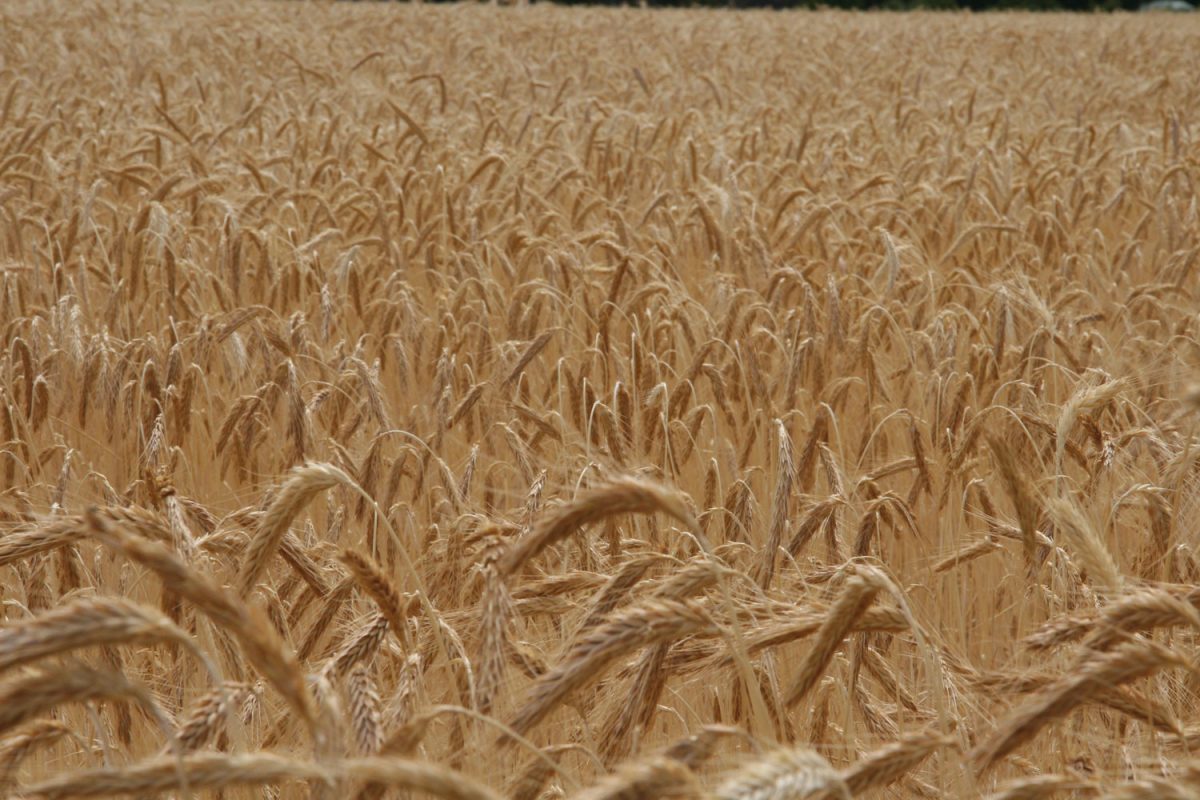Higher CO2 levels under future climate conditions may cause wheat to shift its pest defence strategy, according to Australian research.
When the researchers grew wheat under higher levels of CO2, they found it switched from silicon-based defences (these reduced by 19%) to carbon-based defences.
The good news is that the plants were still able to resist the cotton bollworm, a global wheat pest.
The switch wasn’t enough to change resistance to this pest, but it may impact resistance to others, so applying silicon fertilisers may help maintain pest resistance in future climates, the authors say.
Just three grass crops – wheat, maize and rice – provide 42% of human calories.
Grasses take up and accumulate silicon in their tissues to resist adverse environmental conditions, including herbivore attack.
But all plants must allocate their limited resources to growth, reproduction and anti-herbivore defences in an optimal manner depending on environmental conditions.
The abstract of the paper (by Scott N. Johnson, Ximena Cibils-Stewart, Jamie M. Waterman, Fikadu N. Biru, Rhiannon C. Rowe and Susan E. Hartley) says:
Predicting how plants allocate to different anti-herbivore defences in response to elevated carbon dioxide (CO2) concentrations is important for understanding future patterns of crop susceptibility to herbivory. Theories of defence allocation, especially in the context of environmental change, largely overlook the role of silicon (Si), despite it being the major anti-herbivore defence in the Poaceae.
We demonstrated that elevated levels of atmospheric CO2 (e[CO2]) promoted plant growth by 33% and caused wheat (Triticum aestivum) to switch from Si (–19%) to phenolic (+44%) defences.
Despite the lower levels of Si under e[CO2], resistance to the global pest Helicoverpa armigera persisted; relative growth rates (RGRs) were reduced by at least 33% on Si-supplied plants, irrespective of CO2 levels. RGR was negatively correlated with leaf Si concentrations.
Mandible wear was c. 30% higher when feeding on Si-supplemented plants compared to those feeding on plants with no Si supply.
We conclude that higher carbon availability under e[CO2] reduces silicification and causes wheat to increase concentrations of phenolics. However, Si supply, at all levels, suppressed the growth of H. armigera under both CO2 regimes, suggesting that shifts in defence allocation under future climate change may not compromise herbivore resistance in wheat.
The researchers say their study suggests that managing silicon availability in agricultural soils could be important for maintaining wheat resistance to pests in future climates.
The research paper can be read here.
Source: Scimex












